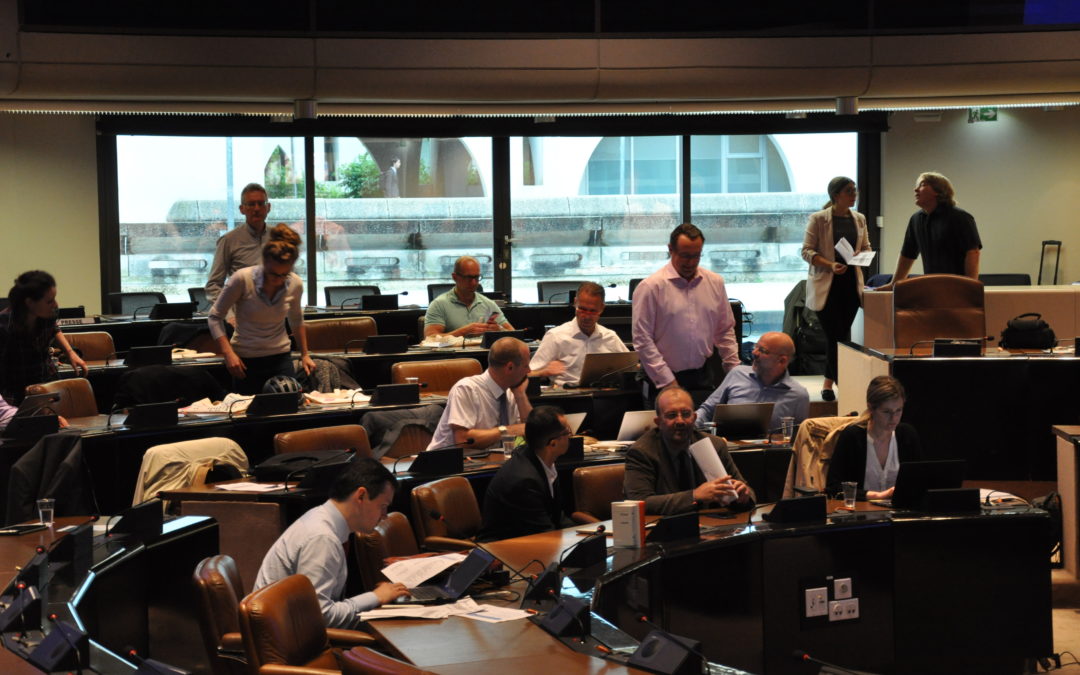Three leading European C-ITS initiatives supported by the European Commission (urban C-ITS pilots in C-The Difference and C-MobILE projects, together with the C-Roads Platform for national and regional deployment), held a roundtable discussion together with policy- and decision-makers and professional users on 6th June 2018 to strengthen commitment and to gain momentum toward large-scale deployment in Europe.
Hosted by Bordeaux Métropole (France), the Roundtable gathered over seventy participants from all over Europe. The event followed up on the City Twinning Workshop held on the previous day in Bordeaux, where deployment strategies for C-ITS and elements of user appreciation were addressed.
After initial steps in research and development, now is the time for deployment – with some caveats, as Jaap Vreeswijk, C-ITS Traffic Architect at MAP Traffic Management, noted in his address: ‘Nobody wants to be the first to deploy [C-ITS services]; everyone wants something that works’.
Darren Capes, from the York City Council, also pointed out the specific deployment issues facing small- to middle-sized cities where budgets are limited. ‘York is an old city, with limited budgets. Our approach is to ask: how do we start deploying C-ITS in a small city?’
Karel van Rooij, CEO of Van den Broek Logistics, emphasized the importance of stop-free travel for trucks when it comes to meeting sustainability objectives. That was the objective of the C-the-Difference Project, which developed a free Android app providing traffic light status information and green light optimal speed advice (GLOSA) for equipped traffic lights in the Bordeaux area and the A63 motorway connecting Bordeaux and Bayonne. The app totals 1200 downloads, showing the potential of smartphone-based C-ITS solutions as an alternative to dedicated on-board units.

above: the C-the-Difference (Bordeaux) app in action. C-MobILE will offer Green Light Optimal Speed Advisory (GLOSA) services as part of its service bundles.
Capitalizing on the ease of use of smartphone-based C-ITS, Evangelos Mitsakis from CERTH (Greece) explained how his team approached taxis in priority: ‘A taxi equals thirty cars for kilometres travelled per day, so CERTH developed apps for taxi drivers, with features such as road hazard warning. It’s easy to integrate more functions into the apps taxi drivers use, and because they drive a lot, they are a great user group’.
All future plans for C-ITS rollouts must however contend with the key question of investments. ‘In Tilburg is a company with two sites on both ends of the city, so the city regulated how and when they can use the roads in between’ explained Karel van Rooij. But when it comes to the infrastructure needed to accommodate the policy, ‘Who is going to invest first: the user, or the city?’
Autonomous vehicles, or self-driving cars, were also a topic of discussion, due to the massive upheaval that their introduction could represent for the fields of traffic management, road design, infrastructure, and urban planning. ‘Very little work is undertaken at the moment on how cities can deal with autonomous vehicles,’ according to Darren Capes. ‘How do you elevate the issue of autonomy from a technical issue to a policy issue? New housing developments in the UK for example are still planned on the principle of personal car ownership; do we need to change that? Nobody has answers to that question.’
Autonomous trucks, on the other hand, are the object of more immediate expectations. ‘We are very interested in autonomous trucks, first for safety, and for the next step: real autonomous trucks’ said Karel van Rooij. ‘How far does it go and how long will it take? Platooning already provides benefits, but edge cases remain’, he added, citing meteorological conditions such as snowfall that might prove difficult to navigate for autonomous vehicles.
Pedro Barradas, from the European Commission Directorate-General for Mobility and Transport, addressed the issue as part of an overview of the Commission’s effort in support of innovation in intelligent transport: ‘Mixed levels of automation and connectivity are going to be there for a long time, so cities should get used to it and make the best of it. Because these vehicles are computers on wheels, traffic authorities will be able to send traffic rules to the cars digitally. Maybe a shift from physical infrastructure investment to digital infrastructure investment is needed.’
Illustrating the ongoing digitalisation of cities, Mads Galm, Program Manager Traffic for the City of Copenhagen, presented the rollout of C-ITS applications in the Danish capital, which include services such as on-demand bike path lighting. Gert Blom, Innovation Manager Mobility at the City of Helmond, also underlined the importance of the digital transition by adding that ‘We now need a new generation of traffic engineers who can not only do infrastructure, traffic lights and so on, but also Intelligent Transport Systems. Where can we get this capacity-building?’
In conclusion, moderator Laurent Meillaud issued a call to action to local governments. ‘What we need now is to deploy in real life, and on the long term. That means that cities have to put money on the table. Of course, the EU can help. But Europe won’t pay for everything. Countries and cities at the local level have to take decisions.’


